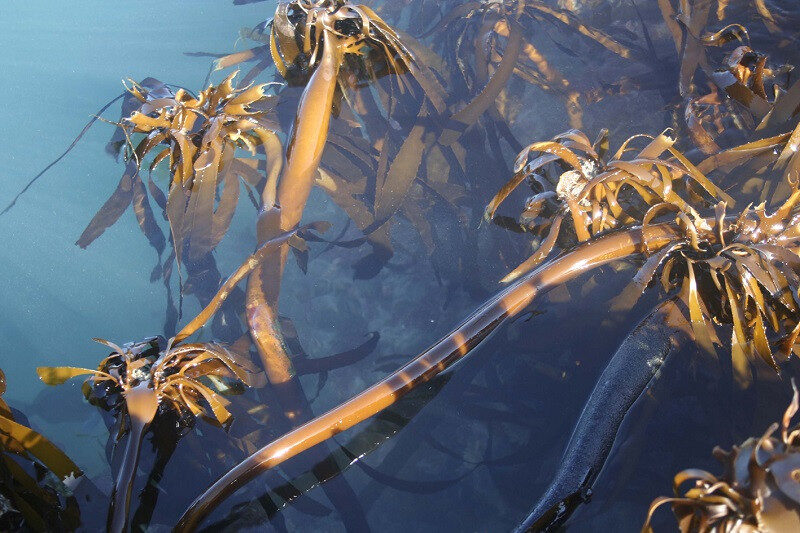Biostimulants are natural or synthetic substances that enhance plant growth, nutrient uptake, stress tolerance, and crop quality without directly providing essential nutrients. They work by stimulating biological processes, improving soil health, and enhancing plant metabolism. This article explores the most commonly used biostimulants—humic substances, seaweed extracts, protein hydrolysates & amino acids, chitin & chitosan derivatives, and microbial inoculants—along with their mechanisms and practical applications.
1. Humic Substances (Humic Acid, Fulvic Acid, and Humin)
Description
-
Derived from decomposed organic matter (peat, leonardite, compost).
-
Humic acid (high molecular weight, improves soil structure).
-
Fulvic acid (low molecular weight, enhances nutrient mobility).
Mechanisms of Action
-
Chelates nutrients (Fe, Zn, Cu) for better absorption.
-
Enhances soil aggregation and water retention.
-
Stimulates root growth and microbial activity.
Application Recommendations
-
Soil Application: 5–20 kg/ha (humic acid) or 1–5 L/ha (fulvic acid) via irrigation.
-
Foliar Spray: 0.1–0.5% dilution for stress mitigation.
-
Best For: Degraded soils, high-value crops, and organic farming.
2. Seaweed Extracts (Ascophyllum, Kelp, Sargassum)
Description
-
Derived from brown algae (e.g., Ascophyllum nodosum).
-
Contains polysaccharides (alginates), betaines, cytokinins, and micronutrients.
Mechanisms of Action
-
Promotes root development and chlorophyll synthesis.
-
Enhances stress resistance (drought, salinity, frost).
-
Acts as a natural plant growth regulator.
Application Recommendations
-
Foliar Spray: 0.5–2 mL/L, applied during vegetative and flowering stages.
-
Soil Drench: 5–10 L/ha to improve microbial activity.
-
Best For: Horticulture, vineyards, and stress-prone environments.
3. Protein Hydrolysates & Amino Acids
Description
-
Derived from enzymatic/chemical hydrolysis of plant/animal proteins (e.g., fish emulsion, soybean meal).
-
Rich in L-amino acids (proline, glycine, glutamic acid) and peptides.
Mechanisms of Action
-
Rapid nutrient assimilation (reduces energy expenditure in synthesis).
-
Improves photosynthesis and stress recovery.
-
Chelates micronutrients for better uptake.
Application Recommendations
-
Foliar Spray: 1–3 mL/L during critical growth stages (transplanting, flowering).
-
Soil Application: 5–15 L/ha via drip irrigation.
-
Best For: High-intensity crops (tomatoes, cucumbers, berries).
4. Chitin, Chitosan, and Their Derivatives
Description
-
Chitin (from crustacean shells, fungi).
-
Chitosan (deacetylated chitin, soluble in acidic solutions).
Mechanisms of Action
-
Elicits plant defense responses against pathogens.
-
Enhances nutrient absorption and root growth.
-
Biodegradable film for seed coating (improves germination).
Application Recommendations
-
Seed Treatment: 0.1–0.5% chitosan coating for disease resistance.
-
Foliar Spray: 0.05–0.2% solution to induce systemic resistance.
-
Soil Amendment: 2–5 kg/ha to suppress nematodes.
-
Best For: Organic farming, greenhouse crops, and disease-prone soils.
5. Microbial Inoculants (PGPR, Mycorrhizae, Trichoderma)
Description
-
Plant Growth-Promoting Rhizobacteria (PGPR): Bacillus, Pseudomonas.
-
Mycorrhizal Fungi: Glomus spp. (forms symbiotic root associations).
-
Biocontrol Agents: Trichoderma harzianum (antifungal properties).
Mechanisms of Action
-
Fixes nitrogen, solubilizes phosphorus/potassium.
-
Improves root architecture and drought tolerance.
-
Suppresses soil-borne pathogens.
Application Recommendations
-
Seed Inoculation: Mix with biofertilizer slurry before planting.
-
Soil Application: 1–2 kg/ha of carrier-based inoculants.
-
Compatibility: Avoid chemical fungicides with Trichoderma.
-
Best For: Low-fertility soils, conservation agriculture.
General Guidelines for Biostimulant Use
-
Combination Strategies:
-
Pair humic acids with seaweed extracts for synergistic effects.
-
Use amino acids with micronutrient sprays for better absorption.
-
-
Timing:
-
Apply during early growth stages (root development) and stress periods.
-
-
Dosage:
-
Follow manufacturer recommendations; excess may inhibit growth.
-
-
Compatibility:
-
Test compatibility with pesticides/fertilizers before mixing.
-
-
Storage:
-
Keep microbial products cool and dry to maintain viability.
-
Conclusion
Biostimulants offer a sustainable approach to enhancing crop productivity, reducing chemical inputs, and improving stress resilience. Their efficacy depends on proper selection, timing, and integration with existing agronomic practices. Future research may uncover novel formulations tailored to specific crops and environmental challenges.









